This past fall season 4 Natural Habitat expeditions ran in southwest China, and we had moon bear sightings on 3 of the 4 trips, and saw a total of eight indivduals! Before that, we only had two sightings in 4 years. This implies that we located a well protected habitat that is ideal for moon bears. Here is a summary and some information on the magnificent moon bears of the Minshan Range, and a hidden, enchanted place where they are thriving.
A moon bear, also known as Asiatic black bear (Ursus thibetanus), is similar to the North American black bear except they have far larger ears, a bushy mane around their necks, and a large moon shaped patch of white on their chest. Their thick neck fur likely evolved to help protect them from tiger attacks, as did their notorious hair trigger temper. To appreciate seeing these bears in the wild, one must understand how rare moon bears are. Moon bears have an incredibly vast range, from Siberia all the way to India, throughout China and including Taiwan and Japan. Imagine an area the size of the United States, but then realize that only 15.000 moon bears exist in the wild. The statistic is truly shocking.
It is a species highly targeted by hunting and poaching due to the demand for bear bile which is used in traditional chinese medicine for the treatment of liver and gall bladder conditions. Unlike other chinese medicine ingredients like rhino horn, bear bile actually does work. Bear bile contains ursodeoxycholic acid (UDCA), which evolved in bears to help their carnivorous physiology consume and handle plant poisons (alkaloids) and utilize a more herbivorous diet. To combat poaching, and make money, the Chinese Government developed bear farms to produce bear bile. Sadly the ease of getting bear bile only expanded the consumer base, and the demand for the “pure, wild stuff” skyrocketed. Bear farming is amongst the cruelest human endeavors, as bears are kept in crush cages and their bile is milked with a catheter. You can read more about this, and the efforts of Animals Asia in rescuing these bears in an article I wrote several years ago here.
With my intimate knowledge of the plight of the wild moon bear in Asia, I figured I would never see a moon bear in the wild. When I saw my first one in 4 years I was “over the moon.” Here is a video I put together of one of the most exciting wildlife experiences in my life….
In a special wildlife reserve that we visit on our expeditions I have learned that a population of moon bears is doing well. Moon bear signs, according to my observations, has increased dramatically in the last 7 years. Assuredly these bears, and the rest of the wildlife, is very well protected in this reserve. A strong core of anti-poaching rangers has obtained a fierce reputation since the 1990’s, and now remote camera surveillance throughout the reserve makes poaching impossible. The habitat is unique, mostly because all of the locals were removed from the valleys in the late 70’s leaving the old farmland very productive for wildlife. Much of the forest is dominated by relic walnut and chestnut trees- a fantastic food source for the bears. Bears have plenty to eat to fatten up in the fall and make baby moon bears. I also think that the bears are losing their fear of people, so they are becoming easier to spot.
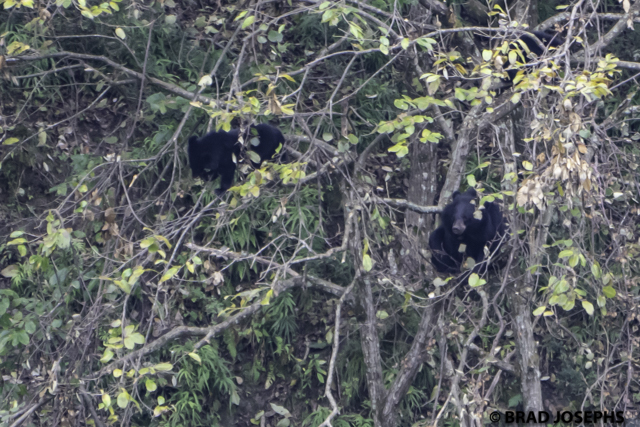
We heard of a sighting of a mother and two cubs by some other people on a trail, so we headed out early the next morning and found them! They were feeding on the fruits of a wild kiwi tree! Most people dont realize that kiwis originated in the mountains of Sichuan, not in New Zealand! We watched the family for an hour from a distance. Images aren’t great because of distance and low light, but what a thrill too see this family fattening up for winter!

While the family worked their kiwi tree, another single bear appeared and climbed a different tree, and seemed to avoid the mother when they came down to the forest floor.
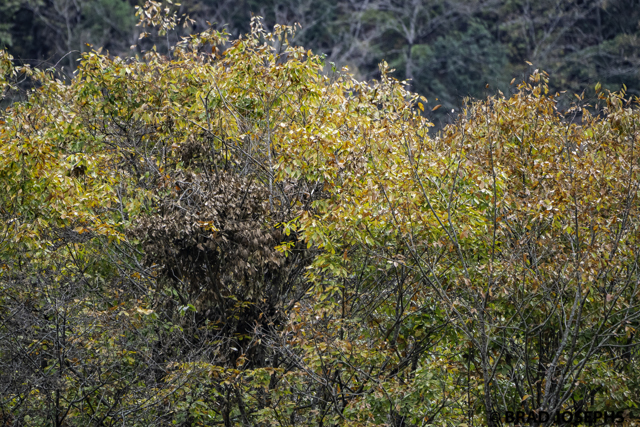
Moon bears have a unique behavior that leaves a distinctive mark of their presence. When a bear finds a productive tree for feeding, either one full of fruit or nuts in the fall, or flowers or young leaf buds in the spring, they build a nest in it. They sit in the middle of the tree, near the strong branches, and break off smaller branches, feed on them, and then use them to build a more comfortable feeding/resting platform. The forests in the reserve are full of old moon bear nests.
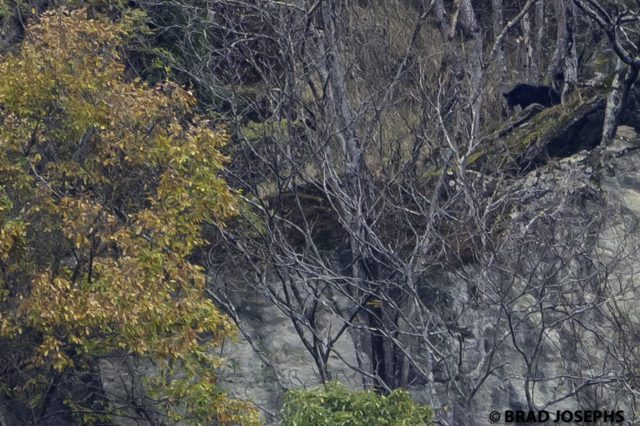
On our second trip we spotted this moon bear, at the upper left, working a ridge on the other side of the valley.
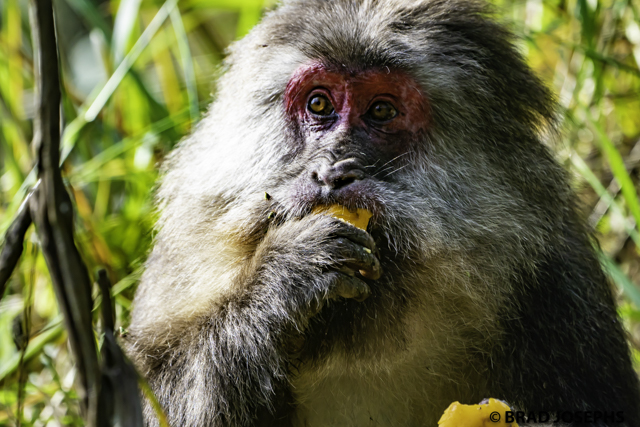
The bounty of fruit and nut producing trees also benefits other very rare species, such as this tibetan macaque feeding on wild persimmons.
It was such a thrill to see moon bears in the wild. I am sure that this is a very special refuge for a species that faces a real possibility of extinction. This is another animal that benefits from the umbrella of giant panda conservation. It was fantastic for the locals to see our groups get so excited about wild moon bears, which I know reinforced their own appreciation of this species. In a world where wildlife faces so many challenges, it is great to see little successes such as this one, with the magnificent moon bears of the Minshan Mountain Range!
Keep exploring,
Brad

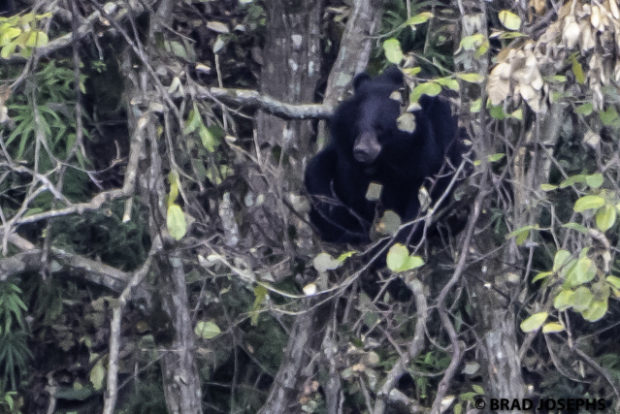
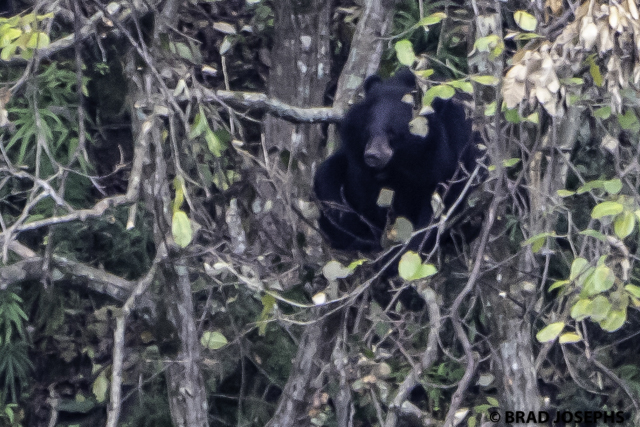
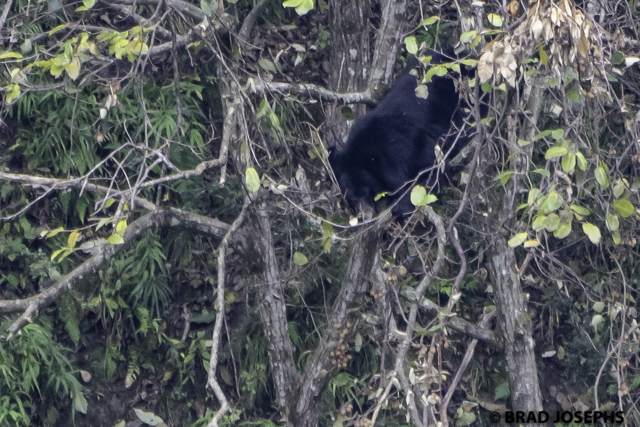
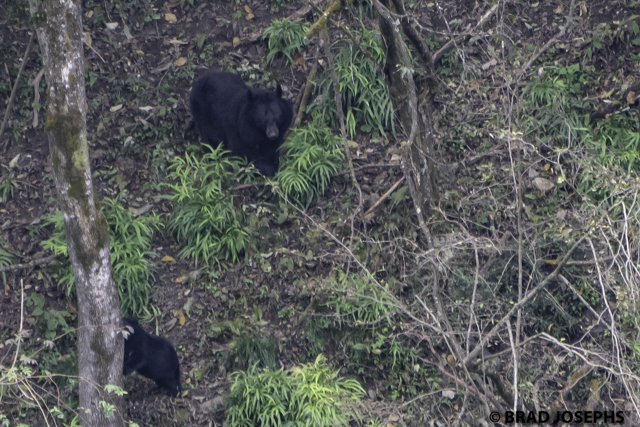
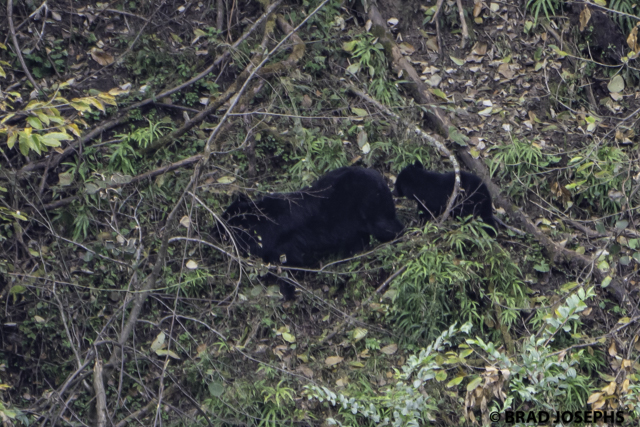
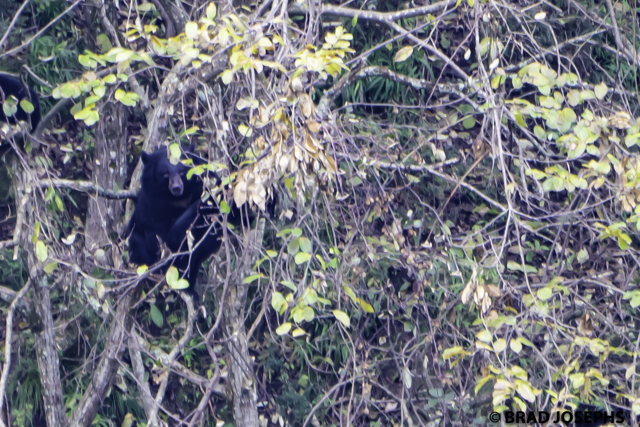
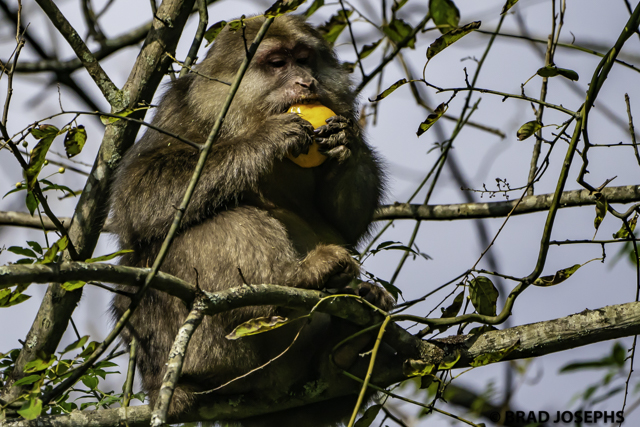
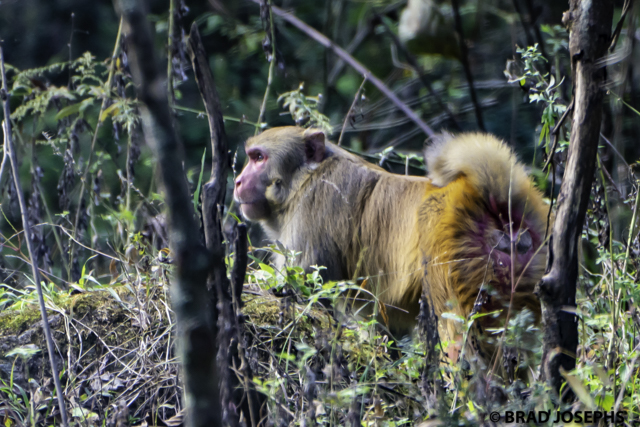
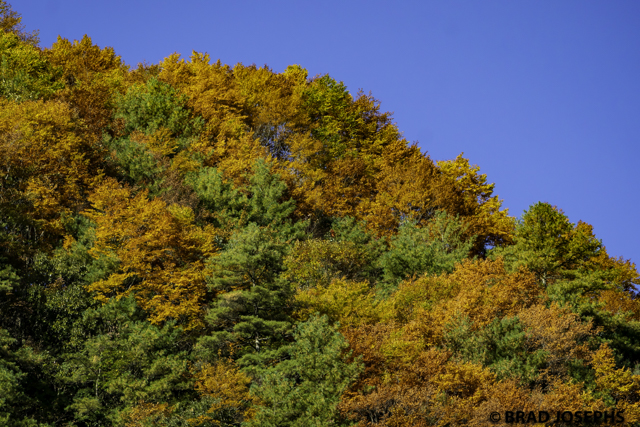


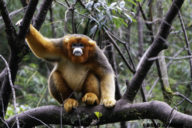
1 Comment
This is so awesome. Hopefully I will be blessed to see them on my next visit to China. Great post , thanks for sharing. 😊